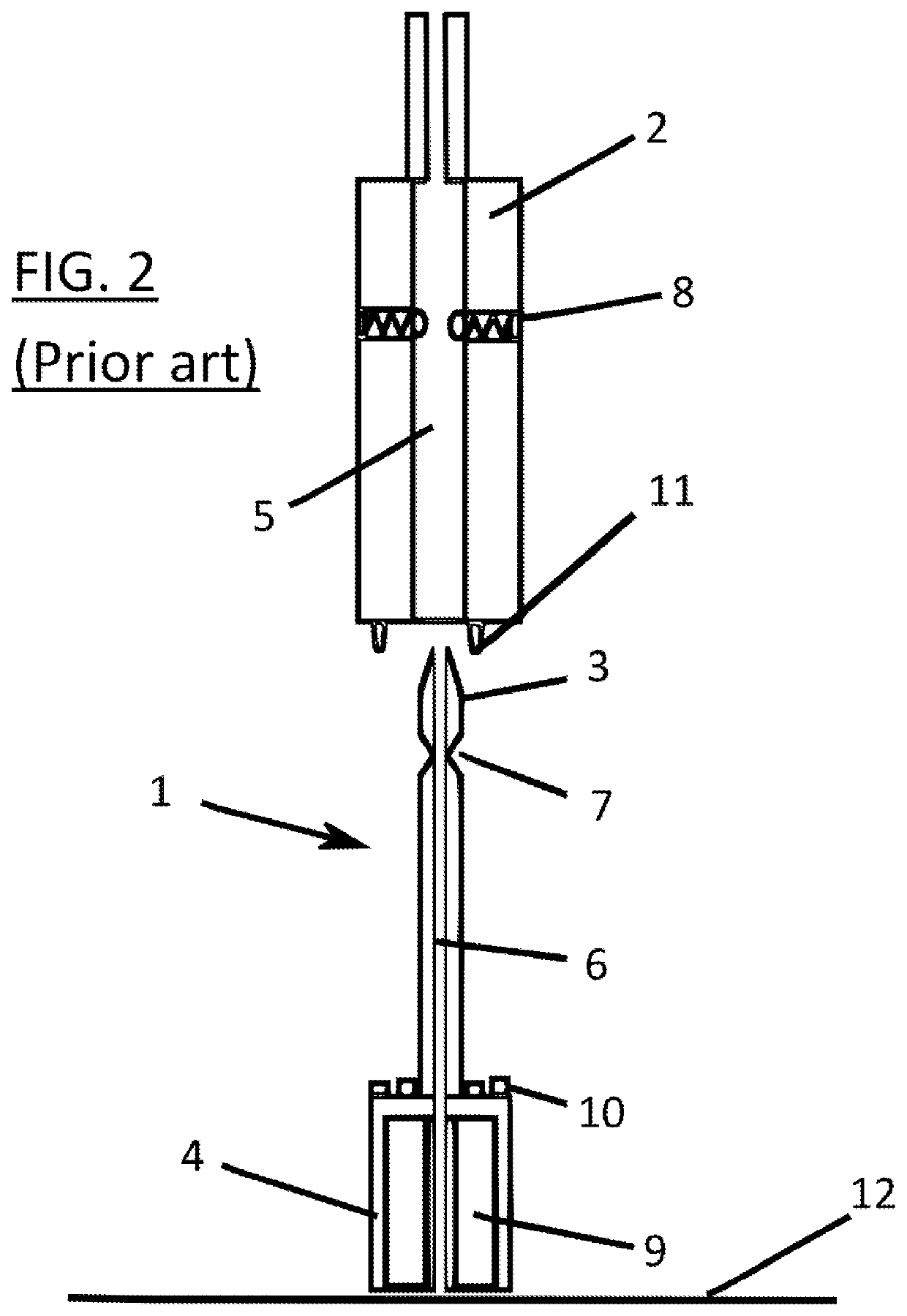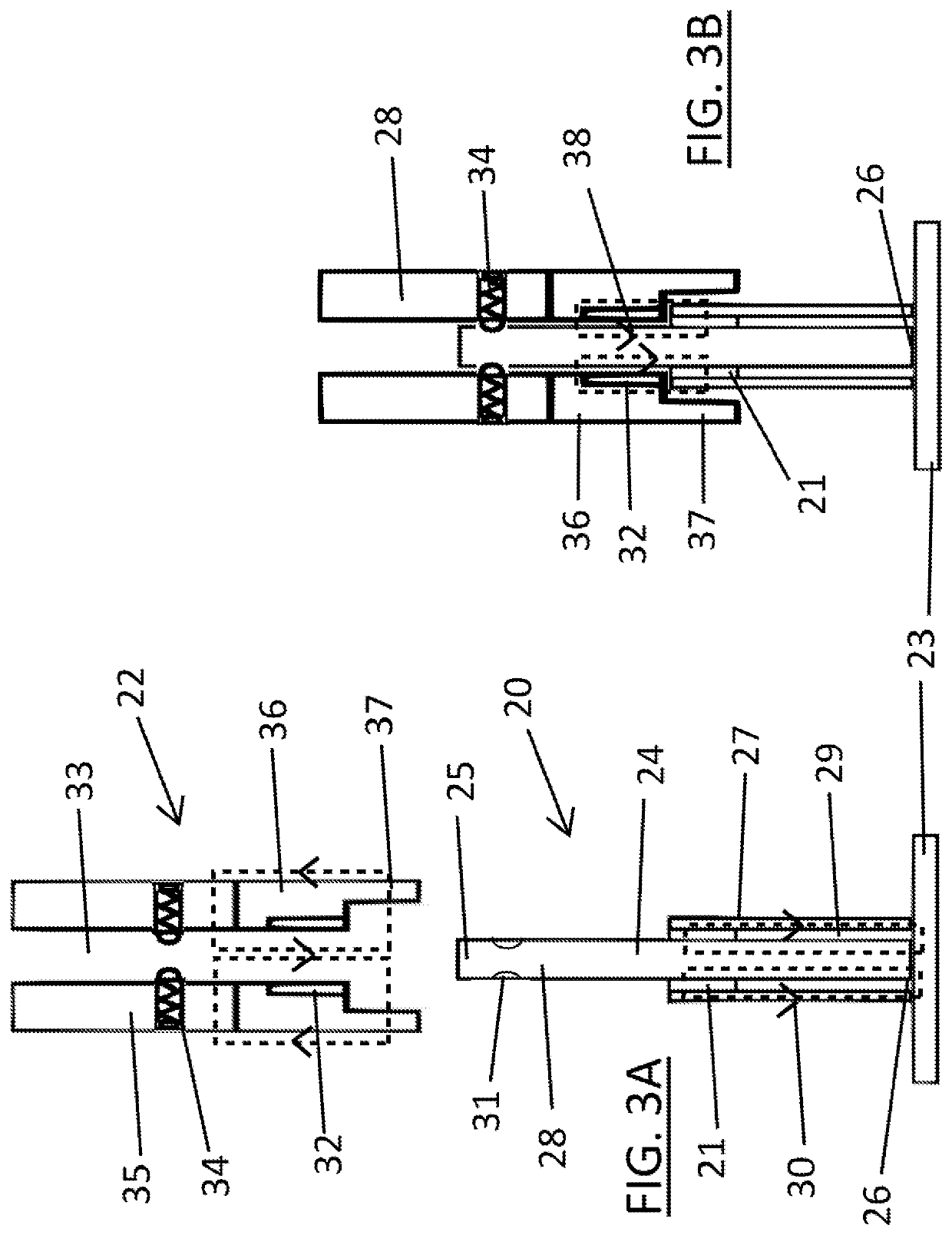Tooling pin placement system
a tooling pin and positioning system technology, applied in the direction of magnets, magnetic bodies, printing, etc., can solve the problems of product specificity, affecting the product quality, and affecting the placement of tooling pins, so as to reduce the magnetic attraction between the tooling pin and the support surface
- Summary
- Abstract
- Description
- Claims
- Application Information
AI Technical Summary
Benefits of technology
Problems solved by technology
Method used
Image
Examples
first embodiment
[0044]the present invention is schematically shown in FIGS. 3A and 3B, which show, in sectional view, a tooling pin 20 having a radially-magnetised permanent pin magnet 21 and an engagement body 22 of a pin-placement tool, in separated and engaged configurations respectively.
[0045]FIG. 3A shows the tooling pin 20 as it may be positioned during a printing operation for example, resting on and supported by a support surface 23 of a tooling table, the support surface being planar and formed from a ferromagnetic and therefore permeable material, such as steel for example. For clarity, only a small part of the support surface 23 is shown in FIGS. 3A and 3B, and it is to be understood that in practice it may extend over a large enough area to underlie a range of sizes of workpieces and accommodate many tooling pins. The tooling pin 20 comprises a pin body 24, here formed from a rigid and magnetically permeable material, such as steel for example. The permeability of the pin body material ...
second embodiment
[0049]the present invention is schematically shown in FIGS. 4A and 4B, which show, in sectional view, a tooling pin 40 having an axially-magnetised permanent pin magnet 41 and an engagement body 42 of a pin-placement tool, in separated and engaged configurations respectively. This embodiment is of particular utility where a tooling pin 40 with a relatively thin (for example in comparison to that shown in FIG. 3A) upper body section 48 is required. Many of the components are generally similar to those previously-described with reference to FIGS. 3A and 3B, and so need not be described further here. In particular, for clarity no mechanical latching mechanism is shown.
[0050]The pin magnet 41, which could for example be formed from high energy NdFeB, is here axially magnetised, i.e. parallel to the vertical length of the tooling pin 40, to produce an associated magnetic field 50, with flux lines passing vertically through the pin magnet 41, constrained within a lower body section 47, in...
third embodiment
[0053]FIGS. 5A-C schematically show, in sectional view, a tooling pin 60 and an engagement body 62, being part of a pin-placement tool, in accordance with the present invention, during a magnetic latching sequence. Many of the components are generally similar to those previously-described with reference to FIGS. 3A and 3B, and so need not be described further here.
[0054]FIG. 5A shows the engagement body 62 and tooling pin 60 in a mutually engaged configuration, in a default state, which would occur for example as soon as the engagement body 62 has been moved into an engaging position with tooling pin 60. The tooling pin 60, which is standing on a support surface 23, here comprises a substantially cylindrical pin body 64, for example formed from a moulded, e.g. an injection-moulded, electro-static dissipative plastics material, which houses a soft magnet 61, such as magnetised steel, at its lower end. As shown, the soft magnet's South pole is located at the lower end of tooling pin 6...
PUM
 Login to View More
Login to View More Abstract
Description
Claims
Application Information
 Login to View More
Login to View More - R&D
- Intellectual Property
- Life Sciences
- Materials
- Tech Scout
- Unparalleled Data Quality
- Higher Quality Content
- 60% Fewer Hallucinations
Browse by: Latest US Patents, China's latest patents, Technical Efficacy Thesaurus, Application Domain, Technology Topic, Popular Technical Reports.
© 2025 PatSnap. All rights reserved.Legal|Privacy policy|Modern Slavery Act Transparency Statement|Sitemap|About US| Contact US: help@patsnap.com



